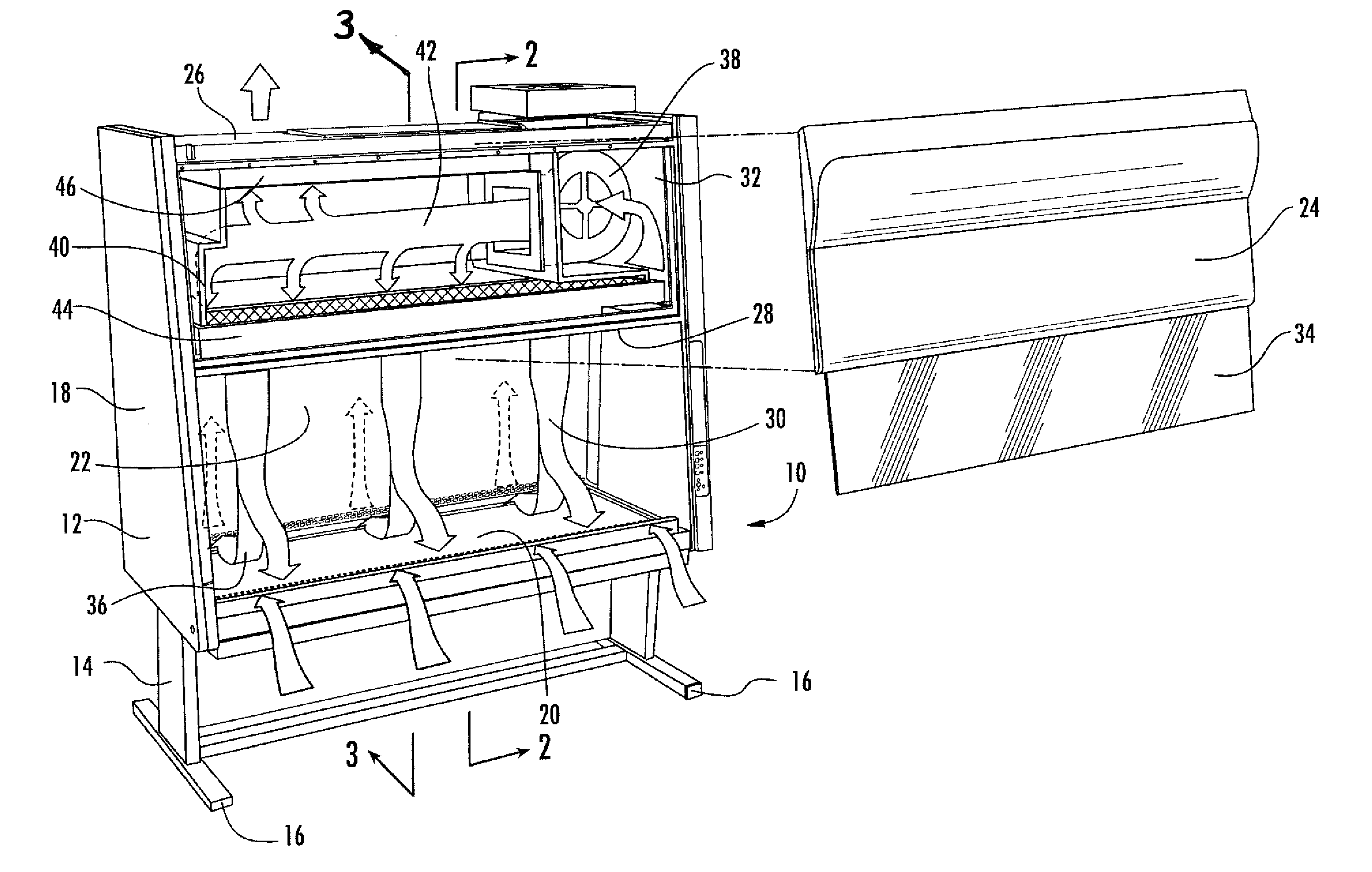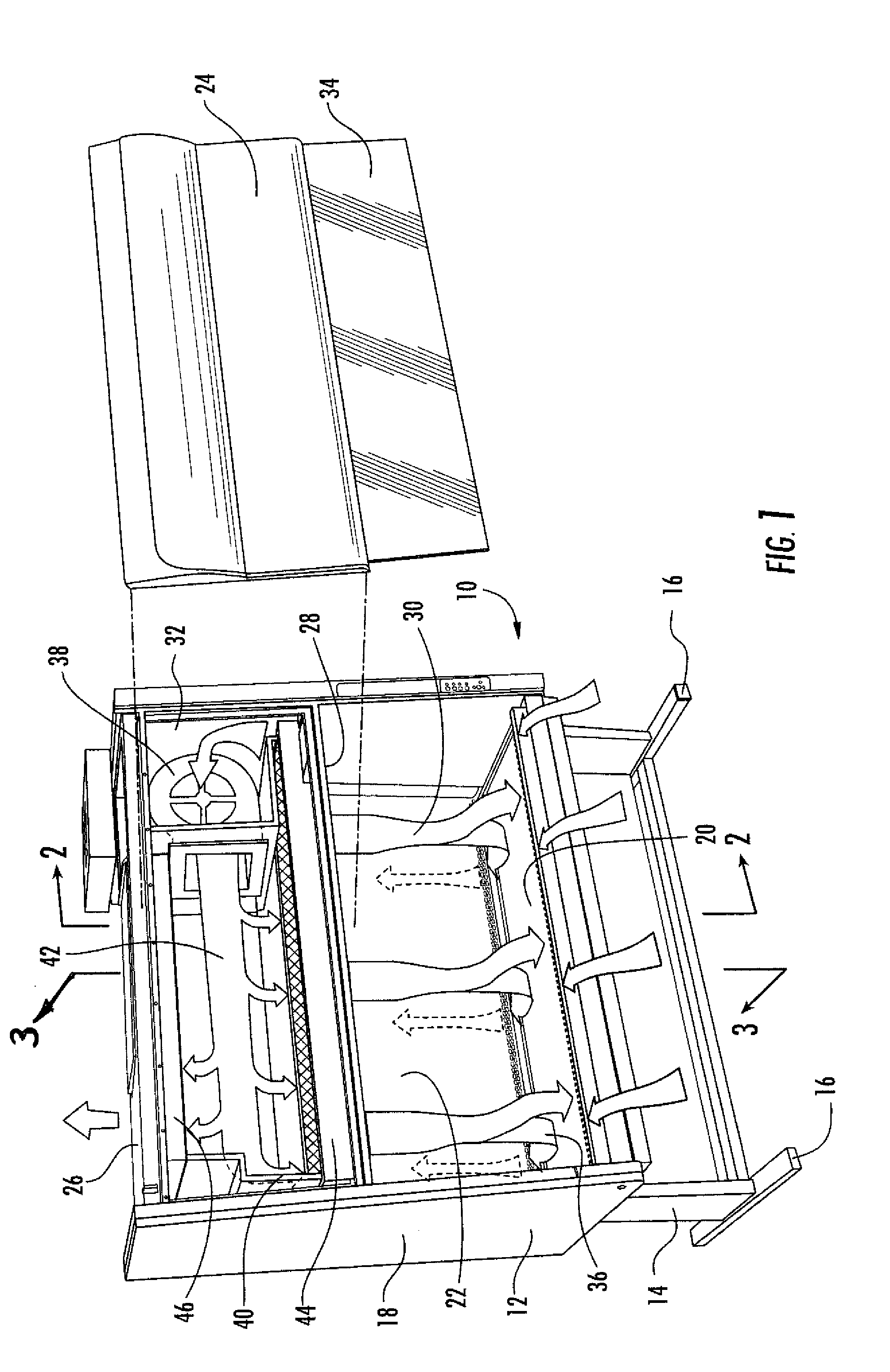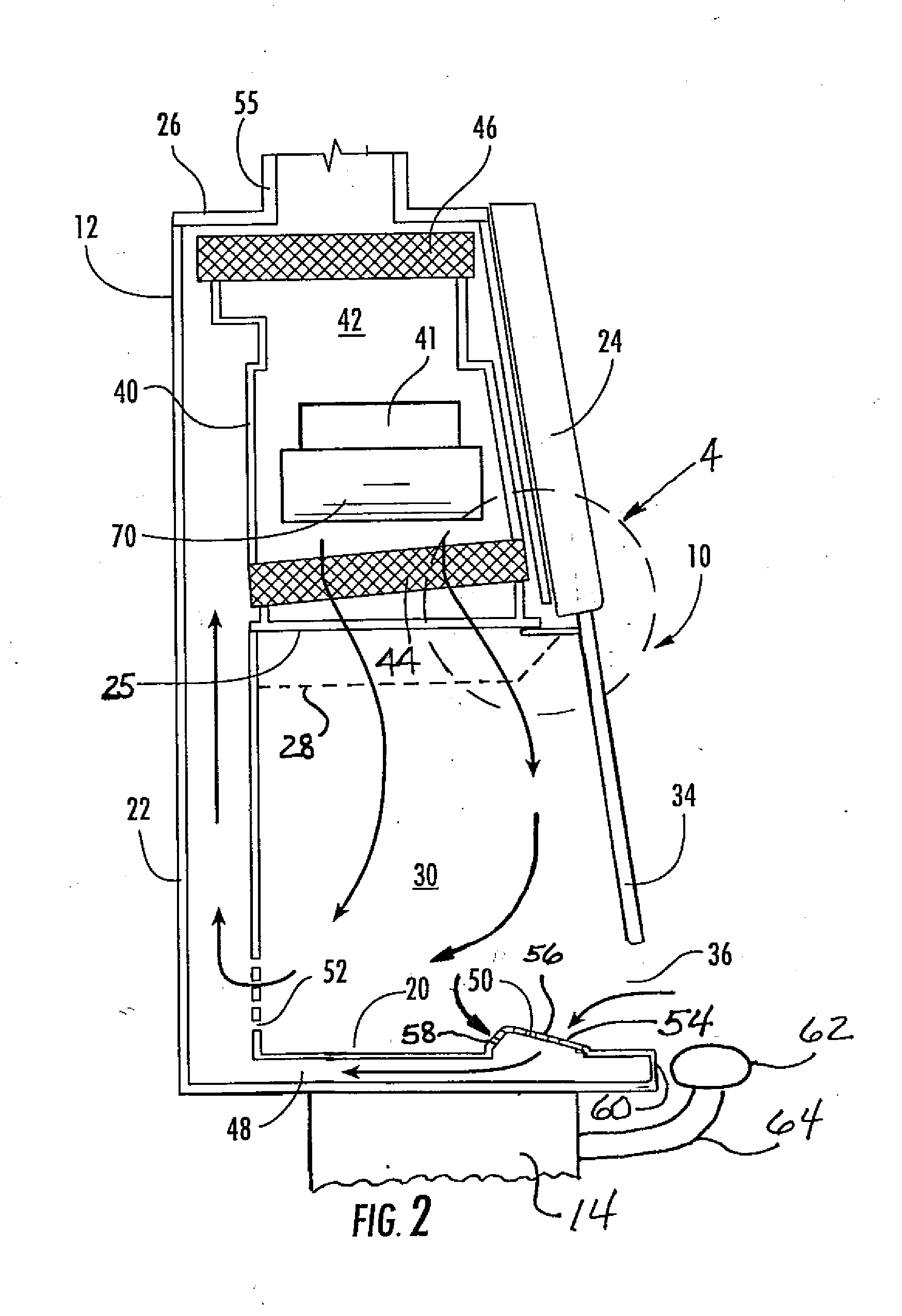Apparatus for directing air flow in a biological safety cabinet
a biological safety cabinet and apparatus technology, applied in the field of apparatus for directing air flow in the biological safety cabinet, can solve the problems of contaminating procedures conducted in the work chamber, hazard to users and other laboratory personnel, etc., to avoid the potential for cross-contamination, promote the laminar flow of the circulating air, and enhance the aerodynamics of the intake air flow
- Summary
- Abstract
- Description
- Claims
- Application Information
AI Technical Summary
Benefits of technology
Problems solved by technology
Method used
Image
Examples
Embodiment Construction
[0014]Referring now to the accompanying drawings, and initially to FIG. 1, a biological safety cabinet in accordance with one preferred embodiment of the present invention is indicated generally at 10. The safety cabinet 10 basically comprises a housing 12 supported on a trestle stand 14, which may include a set of casters 16 for moveability of the cabinet structure. The housing 12 is a generally rectangular structure having spaced-apart end walls 18, a bottom wall 20, a rear wall 22, a partial front wall 24, and a top wall 26, collectively defining an open interior which is divided by a horizontal intermediate filter structure 25, 28, 44 (see also FIGS. 2 and 4) into a lower work chamber 30 and an upper air recirculation chamber 32. The housing 12 may preferably be fabricated of sheet metal, such as stainless steel.
[0015]The partial front wall 24 predominately encloses only the air recirculation chamber 32, leaving open front access by users into the work chamber 30. A transparent ...
PUM
 Login to View More
Login to View More Abstract
Description
Claims
Application Information
 Login to View More
Login to View More - R&D
- Intellectual Property
- Life Sciences
- Materials
- Tech Scout
- Unparalleled Data Quality
- Higher Quality Content
- 60% Fewer Hallucinations
Browse by: Latest US Patents, China's latest patents, Technical Efficacy Thesaurus, Application Domain, Technology Topic, Popular Technical Reports.
© 2025 PatSnap. All rights reserved.Legal|Privacy policy|Modern Slavery Act Transparency Statement|Sitemap|About US| Contact US: help@patsnap.com



